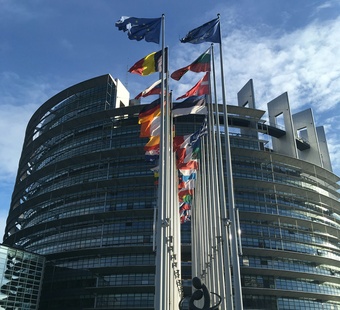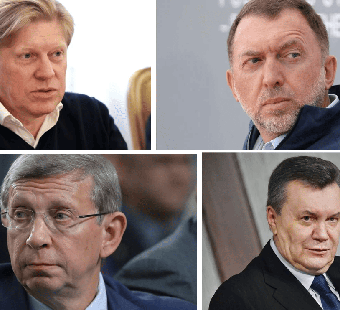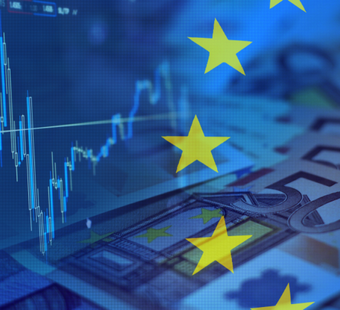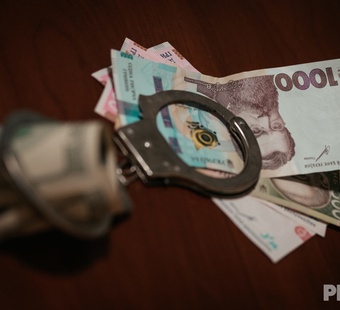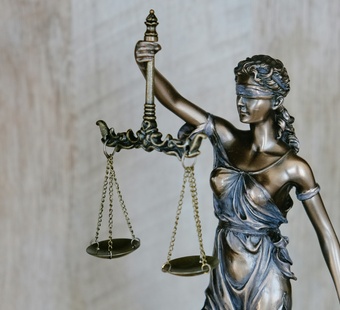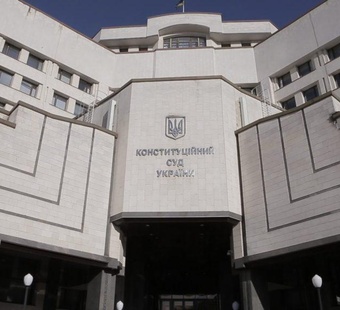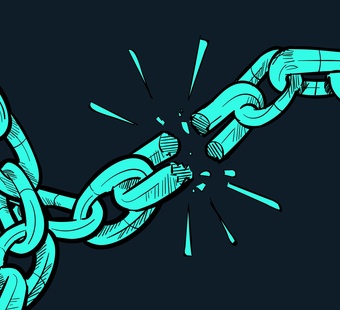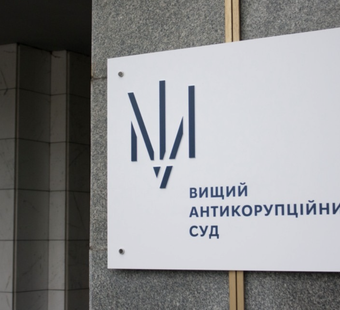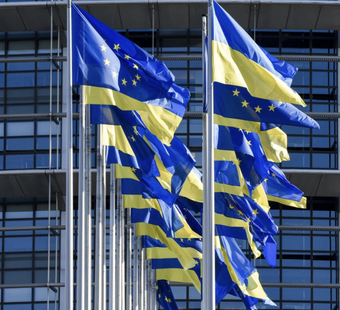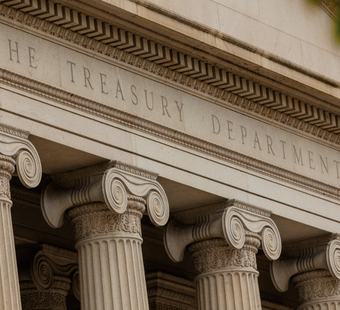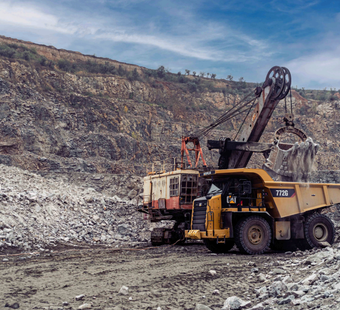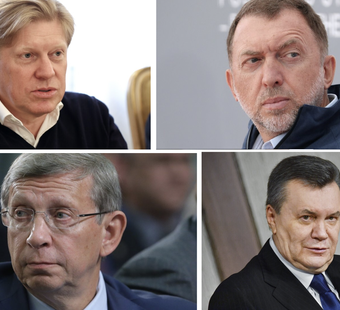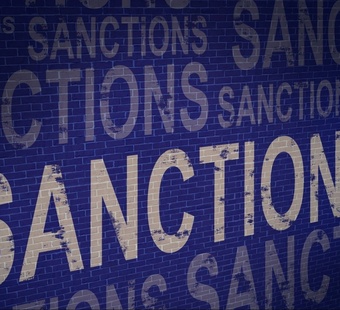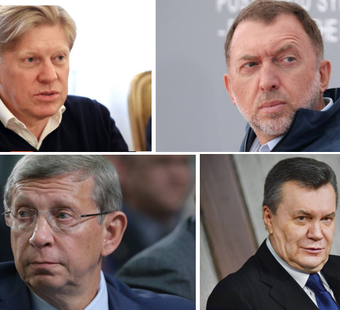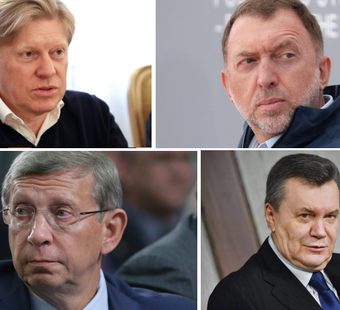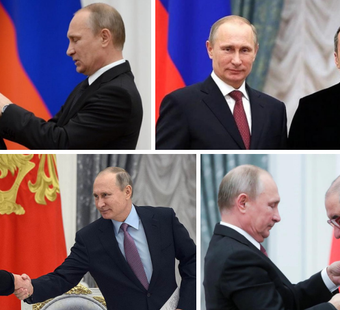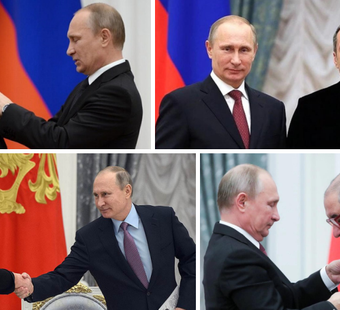Reinforcing the Legal Framework for Seizing Frozen Russian Assets

Acknowledgment:
This policy brief represents a pilot expert initiative among British and Ukrainian scholars shaped through the collaborative engagement and intellectual support of numerous individuals and institutions. In particular, we gratefully acknowledge the contributions of the Future of Ukraine Programme at the Centre for Geopolitics, University of Cambridge, and the Institute of Legislative Ideas, whose legal expertise and comparative research were instrumental in formulating the recommendations presented herein-especially in relation to international frameworks for the confiscation of sovereign and private assets.
We would also like to extend our sincere appreciation to the Rt Hon Sir lain Duncan Smith MP for convening and hosting the parliamentary roundtable at the House of Commons in April 2025. This initiative contributes to a broader transnational effort to enhance legal preparedness and institutional coherence in responding to illicit financial flows and the strategic repurposing of frozen Russian assets in support of Ukraine's recovery and resilience.
Authors:
-
Victoria Vdovychenko, PhD, Joint Programme Leader, Future of Ukraine Programme, Centre for Geopolitics, University of Cambridge
-
Tetiana Khutor, Chairwoman of the Kyiv-based think tank "Institute of Legislative Ideas", Senior Lecturer, National University of Kyiv-Mohyla Academy (Ukraine), Professor of Practice, Schar School of Policy and Government (George Mason University), USA
Contributors:
-
Yuliya Ziskina, Razom for Ukraine
-
Tetyana Nesterchuk, Barrister and Arbitrator at Fountain Court Chambers
-
Aaron Gasch Burnett, Democratic Strategy Initiative
-
Oksana Huzii, Institute of Legislative Ideas
Chapter І

Executive Summary

The UK has an important opportunity to strengthen sanctions against Russia while supporting Ukraine. It has frozen a substantial amount of Russian assets, but critical challenges remain, including: lack of transparency in distinguishing between state and private assets in reporting; absence of comprehensive legislation enabling the seizure of frozen Russian assets; no dedicated trust mechanism to preserve and grow these assets; no unified management standards to prevent asset value deterioration; and no legal framework for converting frozen assets into permanent support for Ukraine. Without decisive action, these valuable resources may remain underutilized in the critical effort to support Ukraine. The following recommendations provide a systematic approach to addressing these gaps.
1. Russian Central Bank Reserves
- Introduce a legal requirement for banks and financial institutions to segregate the Russian central bank assets into distinct, clearly identifiable accounts. Such a measure would prevent commingling, facilitate precise national-level freezing actions - particularly in the event that EU sanctions are relaxed - and substantially enhance transparency and accountability.
- Ensure clear reporting of information regarding the amount of frozen assets of the Russian Central Bank and designated individuals and legal entities.
- A dedicated international trust fund should be established - ideally hosted by a reputable existing international financial institution - to serve as a mechanism for the structured preservation, active management, and eventual allocation of immobilized Russian assets.
- Implement unified, transparent standards to govern the management of these assets to prevent misappropriation and guarantee they are not quietly diluted through poor oversight.
- Develop a robust legal mechanism that enables the lawful seizure and repurposing of frozen Russian Central Bank Reserves, aligned with emerging legislation in t h e United States.
- Establish a framework for channelling seized central bank assets directly to fund Ukraines reconstruction and recovery needs, providing substantial support without burdening British taxpayers.
2. Russian State Property
- Conduct a comprehensive inventory of all Russian state-owned properties within the UK borders, particularly those without diplomatic status.
- Develop legislation that enables the lawful seizure of Russian state-owned properties (especially property without diplomatic status) that pose security threats to t h e UK, following Latvias precedent.
- Apply unified, transparent standards to govern the management of state-owned property to prevent value deterioration and maximize potential proceeds prior to its sale.
- Create a dedicated mechanism for directing all proceeds to Ukraine's recovery effort, reducing the financial burden on British taxpayers.
3. Russian Private Assets
- Improve reporting systems to clearly distinguish private assets of sanctioned individuals and entities from Russian state (including Russian Central Bank Reserves) holdings.
- Adopt a comprehensive and reliable legal framework for the management of frozen private assets of persons sanctioned under the Russia (Sanctions) (EU Exit) Regulations 2019.
- Take immediate action to transfer the £2.5 billion from the sale of Chelsea Football Club to Ukraine for humanitarian purposes as originally intended.
- Initiate the application of Unexplained Wealth Orders (UWOs) for foreign individuals and entities holding assets in the UK, enabling legal seizure where appropriate while enhancing the UK financial integrity.
- Ensure all profits generated from the management and seizure of frozen private assets are transparently redirected to support Ukraine's resilience and recovery efforts.
4. Assets related to the Sanctions breaches
- Adopt a legal framework enabling the transfer of seized assets and fines from sanctions evasion cases to Ukraine, following U.S. and Lithuanian models.
- Ensure all proceeds from fines and seized assets are systematically directed towards supporting Ukraine.
Chapter ІІ

Introduction

The issue of potential negotiations with Russia has recently become one of the central topics in the media space, actively discussed by both foreign leaders and Ukrainian officials, including at the highest levels. The President of the United States, Donald Trump, has identified ending the war as a key priority.
At the end of April 2025 European partners and Ukraine presented a new document related to the potential ceasefire underlying that the frozen assets will be instrumental in recovery and reconstruction of Ukraine(1).
States, including the UK, are exploring the possibility of using sanctioned Russian assets to fund the military support and reconstruction of Ukraine. This would involve seizing or confiscating assets(2). Most domestic sanctions regimes, including the UK’s, do not currently provide for the seizing of assets – only freezing assets temporarily during the time of ongoing war (3). While the UK Government has not stated what it considers the legal barriers to seizing assets may be, commentary suggests that there are implications for international law, human rights, and the general rule of law that must be considered.
In January 2025, Members of the UK Parliament, supported by senior parliamentarians from eight allied nations, published an open letter urging the government to develop a legal mechanism to transfer $300 billion in frozen Russian Central Bank reserves to Ukraine (4) and conducted a debate in both the House of Commons (5) and later in February 2025, the House of Lords (6). In the letter and Commons debate, MPs argued that the UK government must take action to resolve this issue. They further emphasize that transferring at least £25.5 billion (just over $30 billion) currently held in UK accounts would send a «clear signal» of strategic determination and would help deter future conflicts. The same day as the letter was published, the House of Commons passed a motion calling on the Government to investigate outright seizure.
The objective of this policy brief is to provide a comprehensive update on the status of all categories of Russian assets — including central bank reserves, state-owned properties, private assets belonging to sanctioned individuals, and assets linked to sanctions violations. It also aims to identify concrete areas for legislative and regulatory action (as of May 2025) for Members of the UK Parliament to address persistent loopholes in the legal framework governing asset seizure. This analysis is particularly timely given the heightened risk that the European Union may face challenges in maintaining sanctions on Russia, due to its consensus-based decision-making structure and divergent positions held by member states such as Hungary and Slovakia. The upcoming European Council decision in July 2025 on whether to renew the freeze amplifies this question’s current urgency, prompting four former Prime Ministers, including two British ones, to join over 70 signatories to a major open letter published in a Canadian newspaper in April 2025 (7). In it, signatories warn that there is a risk the frozen assets could be returned to Russia if a decision to seize is not taken soon, effectively giving Russia a $300 billion cash injection into its war machine.
This brief was designed in cooperation between Ukrainian and British scholars, in particular from the Centre for Geopolitics and the Institute of Legislative Ideas (ILI) and presented in the House of Commons on April 29, 2025. The analysis draws on data from ILI’s Confiscation Tracker – a dynamic monitoring tool that follows global developments and reporting on the freezing and seizing of Russian assets, both public and private. Currently, the US and Canada have passed legislation to encourage their governments to seize the frozen Russian assets. Other countries, in particular, Switzerland (8) and Several countries, including France and Switzerland, have taken steps toward endorsing the idea of using frozen Russian assets to support Ukraine’s recovery. In its recent governing coalition agreement, the current German government committed to finding ways to use the frozen assets to support Ukraine financially and militarily (9). As of now, Ukrainian international partners only voiced and implemented provisions to use the interests from the frozen funds to cover loans for Ukraine (10).
In addition to central bank assets, there are a significant number of Russian state-owned properties in the UK that may pose a threat to the internal security of the state. Many of these have been stripped of their diplomatic immunity. This creates a unique opportunity for the potential seizure of such properties, following the precedent set by Latvia. Furthermore, a significant amount of private assets belonging to individuals sanctioned under the Russia (Sanctions) (EU Exit) Regulations 2019 remain frozen in the UK, as well as £2.5 billion from the sale of Chelsea Football Club – all of which are potential resources for Ukraine’s recovery.
The UK has also made significant progress in ensuring compliance with sanctions. Examples include the imposition of fines for actions that breach sanctions and criminal prosecutions for evading sanctions, demonstrating the growing effectiveness of the country’s sanctions regime. The funds obtained could be used for Ukraine’s recovery, following the models established by the EU, Lithuania, and the US.
In the current global economic climate, it is critical to establish sustainable sources of funding derived from the assets of the aggressor state and those who enable its aggression – thereby reducing the financial burden on British taxpayers and on the country fighting to defend its sovereignty and the rules-based international order.
(2) For the purposes of this policy paper, we use «freeze» for blocked assets and «seize» for confiscated assets.
Chapter ІІІ

Russian central bank reserves

Arguments to Favour Seizure for the UK and its Allies:
The UK’s sanctions regime, under the Sanctions and Anti-Money Laundering Act 2018, enables the UK to impose asset freezes as one type of sanction through secondary legislation, such as the Russia (Sanctions) (EU Exit) Regulations 2019 (11).
A problematic aspect is the lack of clear figures on the distinction between Russian state and private assets. OFSI reports contain information on the number of assets frozen in relation to the Russia regime that have been reported to OFSI since February 2022. These reports indicate that as of 20 October 2022 – £18.39 billion (12), as of October 2023 – £22.7 billion (13), and as of December 2024 – £25.03 billion (14).
The situation is complicated by the fact that in December 2023, a new reporting obligation was introduced for relevant firms to inform OFSI of any funds or economic resources they hold for the Central Bank of Russia, the Russian Ministry of Finance, and the Russian National Wealth Fund (15). Despite this new obligation, no significant increase in the amount of reported frozen assets has been observed. Moreover, the official OFSI data for 2024 doesn’t separate state-owned from private Russian assets within the reported £25.03 billion total.
Meanwhile, according to the Financial Times, Euroclear holds £25 billion of Russian central bank funds on its own balance sheet in UK institutions, but it is not immobilised under UK sanctions rules, as they are held in Euroclear’s name (16). This lack of transparency in official reporting significantly hampers the ability to accurately identify and assess Russian state and private assets potentially available for seizure.
Economic Secretary to the Treasury, Emma Reynolds, said that the UK has frozen £25 billion worth of Russian assets and working with allies deprived Russia of over $400 billion, the equivalent to four years of Russia’s military spending. She stated, «We will continue to robustly enforce our financial sanctions as part of our wider response to Russia’s barbaric invasion of Ukraine» (17).
The UK government has made clear that these frozen sovereign assets will not be returned to Russia until Moscow pays reparations to Ukraine (18). This policy essentially links asset releaseto Russia’s compliance with its international obligation to compensate Ukraine for war damages. In practice, it means the UK is committed to holding the assets indefinitely unless they can be repurposed for Ukraine’s benefit (19). However, as of early 2025, the UK has not yet passed domestic laws to permanently confiscate (i.e. legally seize ownership of) these frozen state assets. The current legal framework allows freezing but outright seizure remains untested, pending further legislation or international agreement (20).
Politically, there is growing momentum in Britain to push beyond the current freeze (21). In a parliamentary debate, Foreign Secretary David Lammy stated that «Europe has to act quickly, and… we should move from freezing assets to seizing assets,» emphasizing that Britain supports working with allies on emergency laws to repurpose Russian funds for Ukraine (22). This marked a hardening of the UK’s stance and signaled cross-party consensus on the need for stronger measures.
In summary, the UK’s current policy is to freeze and hold Russian assets as leverage until reparations are paid, but there is mounting pressure to convert this into a legal framework for full seizure. The potential for the frozen assets to be returned to Russia if the European Union fails to renew the freeze - something it must do every six months - only adds to this pressure. The UK government has publicly affirmed that «all lawful measures» are under consideration to ensure Russia pays – including potential new legislation. To date, no British law has been enacted to transfer frozen Russian state assets to Ukraine, but the issue is on Parliament’s agenda. The UK is coordinating with international partners on this front, and has positioneditself as one of the more forward-leaning Western nations in terms of political will to «make Russia pay» for its war.
In September 2023, the human rights and research organization Renew Democracy Initiative (RDI) released a report led by Laurence Tribe, professor at Harvard Law School (23).
The authors of the report concluded that all arguments against Ukraine’s right to receive frozen Russian assets lose their strength. Having violated Ukraine’s sovereignty, Russia has, in turn, exposed itself to the risk of its own sovereign rights being compromised. According to the report, Russia’s breach of international law through its aggression against Ukraine renders the seizure of its assets a lawful countermeasure, designed to compel the aggressor to return to compliance with international law.
However, these assertions have also drawn criticism from prominent lawyers and politicians. They argue that lawful countermeasures against violators of international law must be temporary and aimed at restoring adherence to legal norms, rather than serving as punishment. In contrast, according to these critics, transferring Russian assets to Ukraine would be irreversible, effectively transforming these assets into a form of reparations. Other scholars say that the «reversibility» argument is incorrect because the «reversibility» does not apply to the assets themselves, but rather the suspension of immunity — which can be reinstated once Russia comes into compliance with its international obligations to make reparations (24).
Furthermore, the legal complexity surrounding these assets would deepen if Ukraine were to receive such «reparations» before the end of the war – an outcome that remains uncertain.
Others counter that even so, Russia will inevitably face accountability and the obligation to provide compensation for the damage it has inflicted. Therefore, they argue, there is a strong case for applying a portion of the frozen assets toward reparations now – especially given that the devastation Russia has already caused far exceeds the total value of all the frozen funds.
The initial step for the EU was to use the interest from the frozen Russian assets and transfer it to Ukraine. At the same time, the EU having passed 16 sanctions packages and preparing the 17th one, is currently facing a challenge of Hungary and Slovakia not willing to support another Council Decision. There is an imminent risk that once there is a «break» in the sanctions package by the EU, all the frozen assets are going to be restored to its owner – the Russian Federation (25).
Relevant practice from other jurisdictions
An example of a jurisdiction with legislation allowing for the seizure of Russian sovereign assets is the United States. This mechanism was established in 2024 through the «Rebuilding Economic Prosperity and Opportunity for Ukrainians Act» or the «REPO for Ukrainians Act» (26).
The key elements of the US approach include several important components:
- The President shall require any United States financial institution at which Russian sovereign assets are located, and that knows or should know of such assets, to provide notice of such assets to the Secretary of the Treasury, and regularly report to the appropriate congressional committees. Following this, the President may confiscateany Russian sovereign assets subject to the jurisdiction of the United States. The funds shall be deposited into an account, to be known as the «Ukraine Support Fund», administered by the Secretary of State, who is obligated to report to the appropriate congressional committees.
- The confiscated assets shall be used for making contributions to an international body, fund, or mechanism that is charged with determining and administering compensation or providing assistance to Ukraine, supporting reconstruction, rebuilding, and recovery efforts in Ukraine, providing humanitarian and economic assistance to the people of Ukraine. An identification of which such needs should be prioritized, including any assessment or request by the Government of Ukraine with respect to the prioritization of such needs.
- No Russian sovereign asset that is blocked or effectively immobilized by the Department of the Treasury may be released or mobilized until the President certifies to the appropriate congressional committees that hostilities between the Russian Federation and Ukraine have ceased, and full compensation has been made to Ukraine for harms resulting from the invasion (27).
Furthermore, the REPO for Ukrainians Act includes specific limitations on judicial review. The law permits only claims alleging the denial of rights under the Constitution of the United States. This narrow judicial review framework appears designed to prevent delays in asset transfers.
Potential Ways to Handle the Frozen Russian State Assets in the UK:
1. Mandate transparency and segregation of assets
The UK Government should require financial institutions, including those holding Russian state assets on behalf of Euroclear, to identify and publicly report the volume and nature of all Russian state-owned assets held within UK jurisdiction. Crucially, these assets must be segregated from private holdings into distinct, traceable accounts.
This would:
- Prevent the commingling of funds to ensure clear identification and traceability of Russian state assets, particularly those managed through correspondent accounts.
- Enable UK-based freezing mechanisms to remain in effect independently, in the event that EU sanctions are lifted or lapse.
- Strengthen oversight and transparency to support evidence-based policymaking and legal decisions regarding the future use, transfer, or seizure of these assets.
1. Create a strategic mechanism to preserve, manage, and grow immobilized assets
With over €190 billion in Russian central bank assets frozen across jurisdictions – including £25 billion in the UK – there is a real risk that EU sanctions may lapse as early as July 2025, particularly if vetoed by Member States such as Hungary or Slovakia, potentially allowing assets managed by Euroclear to be returned to Russia – directly boosting its war effort.
Most of these assets, including €183 billion held at Euroclear, now sit in low-yield accounts. While some profits are being redirected to Ukraine, Euroclear charges a management fee of 3% (28) and retains a 10% share of the windfall contribution to comply with capital and risk management requirements (29), without transparent disclosure of the specific conditions for such retention.
The UK should:
- Support the creation of a dedicated international trust fund to hold and manage immobilized Russian state assets;
- Enable lawful reinvestment to grow their value;
- Redirect profits to Ukraine as interim support;
- Ensure domestic legal tools protect UK-based assets if EU measures weaken.
These steps would safeguard the UK’s leverage, maximize asset utility, and uphold accountability.
2. Adopt a domestic legal framework for lawful seizure
The UK should follow the example of the United States by developing a robust domestic legal mechanism for the lawful seizure of Russian state assets.
Such a framework would:
- Enable action when political and legal conditions allow.
- Ensure the UK is not left behind if international consensus forms around seizure.
- Close the widening gap between moral responsibility and legal infrastructure.
- Support future reparations and reconstruction in Ukraine.
(19) The Foreign, Commonwealth and Development Office, is the department responsible for the Sanctions framework and the decision to impose sanctions. HM Treasury are responsible for the oversight and enforcement of financial sanctions. The Russian Sovereign Assets are immobilised through legislation laid in March 2022 under Regulation 18 of The Russia (Sanctions) (EU Exit) Regulations 2019, which prohibits financial services being provided to the Central Bank of Russia, Ministry of Finance and National Wealth Fund in respect of their foreign exchange reserves and asset management. Additional legislation was laid in June 2023 to amend the purposes of the Russia Regulations to ensure these assets would remain immobilised until Russia ceases its war of aggression and pays for the damage it has caused to Ukraine.
Chapter ІV

Russian State Property

State of Play in UK
Real estate owned by the Russian state is another important source of potential seizure. The significance of seizing these assets lies in the fact that they pose a threat to the internal security of the UK, as they are often used by Russian intelligence services for subversive activities and influence operations.
The Times investigation has identified 18 properties in the UK owned by the Russian state (30). Notable, only two of the 18 properties are listed as diplomatic premises by the Foreign Office (31), leaving open the possibility of taking appropriate measures with regard to a large number of such objects.
Moreover, several Russian-owned properties are to be stripped of their diplomatic status, which means they no longer have legal immunity from the jurisdiction of Britain (32). These include the luxury 50-room Seacox Heath in Hawkhurst, Sussex which was used as a weekend retreat by Russian embassy staff, and the embassy’s trade and defence section in Highgate, north London, which was believed to be a spy base. It remains Russian-owned (33).
Russia’s defense and trade outposts in Highgate are particularly notable. The defence attache’s offices on Millfield Lane back on to the office of the trade representative on Highgate West Hill. These offices are situated among the most expensive real estate in the UK, and the land is worth millions (34).
In February 2023, Seizure of Russian State Assets and Support for Ukraine Bill was registered (35). However, the 2022-2023 session of the Parliament has prorogued, and this Bill will make no further progress (36). There’s been no comprehensive legislation specifically targeting Russian state assets, despite the obvious security concerns and the significant economic value of these assets.
Relevant practice from other jurisdictions
Latvia provides an exceptionally valuable example of an effective approach to managing sanctioned assets through the seizure of the Moscow Cultural and Business Center (better known as the House of Moscow) in Riga. On January 20, 2024, a law «On actions with real estate, which is necessary to eliminate the threat to state security» came into force, transferring this property to the ownership of the Latvian state (37).
The «House of Moscow» has been used since its establishment as a base for various influence operations carried out by the Russian Federation and directed against the interests of the Republic of Latvia. The ownership structure reveals clear links to the Russian state, specifically, Moscow mayor Sergei Sobyanin and Russian President Vladimir Putin, both of whom were added to the OFAC and EU sanctions lists on 25 February 2022 (38).
The Latvian authorities have attempted to sell the seized property at auction. Currently, one of the attempts to hold auctions is underway from 26 April to 26 May, with registration open until 16 May. The starting price for the auction is 2.142 million euros, with a bid increment set at 10 000 euros (39).
The Latvian parliament has approved amendments to direct the proceeds from the eventual sale to support Ukraine (40).
Potential Ways to Conduct:
1. Conduct comprehensive audit and enhance transparency
The UK Government should initiate a thorough inventory of all Russian state-owned properties within its borders. This audit should carefully assess each property’s current diplomatic status and analyse legal pathways for potential status revocation where appropriate. The review must provide detailed valuation assessments.
This would:
- Identify properties used for non-diplomatic purposes that may pose security risks;
- Quantify the total economic value of these assets for potential management or seizure.
2. Adopt domestic legal framework for the lawful seizure of Russian state assets and the subsequent transfer of proceeds from their sale to Ukraine
The UK should follow the example of Latvia by developing a robust domestic legal mechanism for the lawful seizure of Russian state-owned properties.
Such a framework would:
- Establish clear legal grounds for seizure based on security threat assessment;
- Create transparent processes for property seizure, and eventual sale;
- Define specific mechanisms to channel proceeds directly to support Ukraine.
3. Establish comprehensive management standards for Russian state-owned property prior to its sale
The UK should implement unified, transparent standards to govern the management of seized Russian state properties during the interim period before their sale. This would ensure these valuable assets maintain or increase their market value while generating income that could support Ukraine.
These standards should:
- Appoint professional property managers with expertise in high-value real estate;
- Explore temporary leasing opportunities to generate immediate revenue;
- Establish transparent accounting practices for all income generated;
- Create a dedicated mechanism for directing all proceeds to Ukraine’s recovery effort.
Chapter V

Russian Private Assets

State of Play in UK
Another source of profit could be the private assets of individuals sanctioned under the Russia (Sanctions) (EU Exit) Regu lations 2019. As noted above, one of the key challenges is the lack of clear reporting, making it difficult to accurately assess their total value and potential benefit to Ukraine’s recovery.
As of March 2025, the £2.5 billion generated from the sale of Chelsea Football Club remains frozen in a UK bank account. The funds have not been distributed due to differing views between the UK government and Abramovich regarding their allocation: Abramovich wants the proceeds to benefit all victims of the war, including Russian soldiers, as well as other charitable causes outside Ukraine, while the UK government maintains that the £2.5 billion is ring-fenced solely for humanitarian causes in Ukraine (41).
This represents a deliberate delay strategy, as the mere possibility of sanctions being lifted encourages Russian proxies to wait and develop tactics for obstruction.
Relevant practice from other jurisdictions
One of the countries with legislation allowing the seizure of private assets is Canada. Incparticular, there is the Special Economic Measures Act (SEMA) (42), which was significantlycstrengthened in 2022-2023 specifically to address Russia’s invasion of Ukraine.
The key elements of the Canadian approach include several important components:
1. The Governor in Council possesses the legal authority to order the seizure or restraintcof any property situated in Canada that is owned, held, or controlled, directly or indirectly, by a foreign state or person against whom economic measures have been taken.
2. The judicial process is a critical part of SEMA’s asset forfeiture mechanism. A judge must determine that the property is described in an order and confirm that the property is owned, held or controlled, directly or indirectly, by the designated person. Notice must be given to potentially interested parties, and third parties retain rights to make claims on the property.
3. Regarding the use of proceeds, SEMA specifically allows funds from forfeited assets to be directed toward the reconstruction of a foreign state a dversely affected by a grave breach of international peace and security , the restoration of international peace and security, or compensation of victims of a grave breach of international peace and security, gross and systematic human rights violations or acts of significant corruption (43).
However, this law has legal flaws. Canada’s expropriation without compensation of private Russian assets may run afoul of international law rules on expropriation and of its bilateral investment treaty with Russia (44).
In contrast, Estonia offers an alternative approach that may help resolve some of these legal challenges. Under the Estonian mechanism, when a person’s assets are used in advance to compensate for damage caused by a foreign state's unlawful act, that person receives a freely transferable and inheritable right of claim. This claim is equal to the value of the assets used and is directed against the responsible state – in this case, Russia – for the damage it caused.
This model preserves the principle of compensation and may offer a legally sound pathway for jurisdictions like Canada that seek to advance reparations while minimizing exposure to legal risk.
Estonia has become the first EU country to develop a legal mechanism for using frozen Russian assets as compensation to Ukraine. On May 15, 2024, the Estonian Parliament passed the Act on Amendments to the International Sanctions Act and Amendments to Other Associated Acts (45).
The key elements of the Estonian approach include several important components:
1. The ability to use the assets of a subject of an international sanction as prepayment of the compensation for the damage caused to a foreign state if the damage has been caused by a violation of the prohibition on the use of force arising from Article 2 (4) of the United Nations Charter or a violation of the rules of warfare during the unlawful use of armed forces.
2. The application of the mechanism requires the existence of damage caused by the commission of the unlawful act, which has been proven must be compensated for pursuant to international law, a claim for compensation for damage submitted by the affected foreign state to the foreign state which caused the damage, a partial or full failure by the such state to satisfy the claim within a reasonable period of time, and a request by the affected foreign state, an international organisation, or an internationally acknowledged compensation mechanism related to the claim to use the assets of a subject of an international sanction as prepayment of compensation for damage. A crucial condition is the established connection of the subject of sanctions with the state that caused the damage and the commission of the unlawful act.
3. The mandatory notification of the person whose assets are to be used and the possibility to contest the decision in administrative court.
The law aims to achieve more than transferring millions of frozen Russian assets to Ukraine. By making such decisive and morally necessary decisions, Estonia shows its strong support for Ukraine and enhances its influence on global issues. This move sets a precedent for other countries to adopt similar mechanisms.
Potential Ways to Conduct:
1. Conduct enhance transparency of sanctioned persons’ private assets through clear reporting system
The UK Government should initiate a thorough reporting of Russian private assets belonging to persons sanctioned under the Russia (Sanctions) (EU Exit) Regulations 2019. Reports should clearly distinguish these assets from Russian state holdings, with separate figures displayed by category for improved tracking.
2. Adopt a comprehensive legal framework for managing frozen Russian private assets
The British Parliament should adopt a reliable legal framework for the management of frozen private assets of persons sanctioned under the Russia (Sanctions) (EU Exit) Regulations 2019, with provisions that these assets should be placed under professional management with a view to preserving and generating income. The proceeds from such management should be transparently redirected to support for Ukraine.
Such a framework would:
- Place assets under qualified financial management with expertise in relevant asset classes;
- Implement strategies to maintain or grow asset value;
- Establish transparent procedures for such asset management and accounting for all profits generated;
- Create dedicated mechanisms directing all profits transparently to Ukraine’s resilience and recovery efforts.
3. The transfer of assets that should already have been directed to Ukraine
The UK government should take immediate action to resolve the stalled transfer of the £2.5 billion from the sale of Chelsea Football Club, which has remained frozen in a UK bank account since March 2025. This prolonged delay serves no constructive purpose and only benefits Russian interests through deliberate obstruction.
The funds should be promptly transferred to Ukraine for humanitarian purposes as originally intended, regardless of Roman Abramovich’s objections. His attempt to divert funds to purposes outside Ukraine, including to Russian soldiers, directly contradicts the sanctions' purpose and undermines UK policy objectives.
This transfer would:
- Demonstrate the UK’s commitment to following through on sanctions enforcement;
- Send a clear message that delays and obstruction tactics will not succeed, and establish a precedent for similar cases involving frozen assets of sanctioned individuals;
- Close a significant loophole that currently undermines the sanctions regime's effectiveness.
4. Apply Unexplained Wealth Orders (UWO) for foreign individuals and entities holding frozen assets in the UK
In 2017, the United Kingdom introduced a mechanism for seizing unexplained assets (unexplained wealth order, UWO) (46), according to which the defendant in civil asset seizure proceedings is the owner of such assets. Moreover, state authorities are not required to prove a link between the property and a predicate criminal offence, and the court decides on the basis of the balance of evidence that the assets were acquired from unexplained sources. The burden of proof is shifted from the state to the owner of the property, who must prove that the origin of the assets is lawful.
The most illustrative case in this context is that of the Hajiyevs. Wife of imprisoned Azerbaijani banker J. Hajiyev , was the first person to be subject to a UWO in 2018. The NCA seized jewellery worth $500,000. In 2019, a Cartier diamond ring worth $1.5 million was seized (47). In August 2024, the NCA successfully used this mechanism to seize a house worth around £14 million and a golf club belonging to the family (48).
This approach would:
- Enable legal seizure and transfer of certain high-risk assets to Ukraine where appropriate;
- Enhance the UK’s economic security by tightening oversight over illicit capital flows;
- Create a dual benefit of supporting Ukraine while protecting UK financial integrity;
- Target corrosive capital that threatens both national security and economic stability.
(44) To amend some legal flaws, an Act to amend the Special Economic Measures Act (disposal of foreign state assets) (Bill S-278) was drafted, but it has not yet been adopted. The dissolution of Parliament to allow for the most recent Canadian election will require this legislative amendment to be introduced again. Senator Donna Dasko has reaffirmed her commitment to doing so. Both major Canadian political parties, the Liberals and Conservatives, also endorsed confiscation during the 2025 election campaign. See – https://www.parl.ca/legisinfo/en/bill/44-1/s-278
https://liberal.ca/wp-content/uploads/sites/292/2025/04/Canada-Strong.pdf
https://www.conservative.ca/conservatives-will-provide-seized-russian-assets-to-ukraine/
Chapter VІ

Assets related to the Sanctions breaches

State of Play in UK
An additional source of profit could be seized assets and fines imposed for sanctions breaches. The UK’s measures to counter actions for non-compliance include 318 open OFSI investigations into potential breaches of The Russia (Sanctions) (EU Exit) Regulations 2019. Since February 2022, OFSI has investigated and closed 388 cases relating to such potential breaches (49).
OFSI has imposed three fines:
1. on Hong Kong International Wine and Spirits Competition Limited, and was just £30,000. The conduct in question was the receipt of funds and goods from a designated person. The goods in question were wine bottles. HKIWS was also found to have made «economic resources» available to a designated person (50);
2. on Integral Concierge Services Limited, and was for £15,000 . The fine related to 26 payments made to, or received from, a designated person under the UK’s Russian sanctions. The payments related to property management including collecting rent, paying for maintenance, and ICSL taking its own management fees (51);
3. on Herbert Smith Freehills CIS LLP Moscow, and was £465,000. The penalty relates to six payments made by HSF Moscow to designated persons (Alfa-Bank JSC, PJSC Sovcombank, and PJSC Sberbank) with a collective value of £3,932,392.10 (52).
National Crime Agency investigated another two cases:
1. Russian billionaire Petr Aven’s estate manager has agreed to forfeit more than £750,000 ($963,260) to end a near-two year investigation by British police over sanctions dodging. The investigation focused on around £3.7 million routed to the UK from an Austrian trust in the hours before European sanctions were imposed. Aven himself has no UK bank account but was suspected of using those held by his wife and estate management firms as a personal «piggy bank» to fund his lifestyle. (53)
2. Dmitrii Ovsyannikov and Alexei Ovsyannikov have been found guilty of eight counts of breaching financial sanctions and two counts of money laundering and sentenced to 40 months imprisonment and 15 months imprisonment suspended for 15 months respectively. Dmitrii, a former governor of Sevastopol in Russian-occupied Crimea and Deputy Minister, had been sanctioned since November 2017. Despite this, after moving to London and obtaining a British passport in January 2023, he applied for a Halifax bank account and attempted to buy a Mercedes Benz GLC 300 at the cost of £54,000. However, his bank accounts were frozen once it was realised that he was on the UK’s sanctions list. His brother Alexi purchased the car Dmitrii Ovsyannikov then had use of the vehicle, leaving his debit card for Dmitrii while traveling, and paying approximately £17,000 in private school fees for Dmitrii’s children (54).
Thus, the millions in funds associated with sanctions breaches represent a real source of financial support for Ukraine that requires no significant legislative changes.
Relevant practice from other jurisdictions
Within the EU, the necessity to establish a mechanism for the transfer of seized assets in relation to the violation and circumvention of sanctions is provided for in Article 19 of Directive (EU) 2024/1260 of the European Parliament and of the Council of 24 April 2024 on asset recovery and confiscation (55). This provision creates a legal basis for the potential transfer of assets seized for violating and circumventing EU sanctions to Ukraine’s recovery, which is particularly relevant in the context of Russian aggression.
Lithuania went even further by adopting amendments to the Law on Cooperation and Humanitarian Assistance. According to these amendments, not only seized property, but also fines from violations of international and national sanctions will be used for support related exclusively to the reconstruction and restoration of Ukraine due to russian aggression (56).
The US approach, introduced through the adoption of amendments (57) to the Consolidated Appropriations Act, 2023 (58), is also noteworthy. This amendment allows the U.S. Department of Justice, through the Attorney General, to transfer to the Secretary of State the proceeds of any forfeited property of sanctioned persons. Subsequently, the US Secretary of State, within the framework of the Foreign Assistance Act (1961), may use these proceeds to provide foreign assistance to Ukraine to «remediate the harms of Russian aggression towards Ukraine» (59). Significantly, the US mechanism has already been used in two cases: the first was the seizure of $5.4 million in assets belonging to Russian oligarch K. Malafeev (60) and their transfer as part of one of the aid packages to Ukraine (61), and the second was the transfer of approximately $500,000 to Estonia for its active role in the proceedings, which the country planned to use to help Ukraine (62).
Potential Ways to Conduct:
1. Adopt a comprehensive legal framework for transferring seized assets and fines from sanctions violations to Ukraine
The UK should establish unified legislation enabling the systematic transfer of both seized assets and fines from Russia sanctions breaches to Ukraine’s reconstruction efforts, directly following the successful models implemented in the United States and Lithuania.
This framework would:
- Serve as a powerful deterrent against future sanctions violations by demonstrating tangible consequences;
- Establish a clear causal link between illicit behavior and supporting the country harmed by such actions, upholding the principle that assets should be directed to support the victim;
- Create a sustainable funding stream for Ukraine’s reconstruction initiatives;
- Reduce the financial burden on UK taxpayers for Ukraine support;
- Strengthen the UK’s position as a leader in meaningful sanctions enforcement.
This comprehensive approach would leverage the UK’s existing enforcement actions to maximize support for Ukraine while ensuring those who violate sanctions face appropriate consequences.
Conclusions

Conclusions

Strengthening Ukraine’s position is crucial, as previous approaches have weakened Ukraine's negotiating process. We need not theoretical but practical measures that will enhance Ukraine’s resilience, security, and defense capabilities. This is a matter of both Ukraine's defense capacity and ensuring security of the UK and Europe.
The proposed approaches to dealing with various categories of Russian assets represent a comprehensive strategy that addresses both immediate needs and long-term sustainability. By implementing these mechanisms, the UK would establish a precedent for other countries and demonstrate leadership in turning sanctions from temporary measures into effective tools for justice.
Using Russian assets against Russia means that money invested in properties will not be used for activities threatening the UK’s internal security. Supporters of aggression will no longer feel comfortable in the UK, and the burden will shift from British taxpayers to Russia and Russians themselves.
Extraordinary circumstances necessitate exceptional policy responses. The United Kingdom currently faces a pivotal opportunity to implement decisive measures that would ensure the financial burden of reconstruction is borne by the perpetrators of aggression, rather than its victims.
About the Authors

About the Authors

Dr. Victoria Vdovychenko is a widely recognized and published expert on the issues of hybrid warfare, strategic communication, with particular emphasis on relations between Ukraine and the European Union as well as NATO.
Victoria is currently a co-lead of the Future of Ukraine Program at the Centre for Geopolitics, University of Cambridge as well as the British Academy CARA Fellow. She is a co-author of policy papers Winning the Future: Strategies for Resilient Europe and Ukraine, 2025, Ukraine Scenarios 2032, Firewalling the Future: Ukraine and Europe, «Resilience Paper Review» (2022), etc.
Currently, Victoria is involved in conducting research on the strategies of Ukraine’s victory and its implication for the Black Sea area as well as European security architecture.
Tetiana Khutor is a legal expert specializing in anti-corruption, asset recovery, and sanctions policy. She heads the Institute of Legislative Ideas, a leading Ukrainian legal think tank, where she has led major reforms, including sanctions evasion and circumventions and asset managment.
She previously served as Legislative Director to the Chair of the Anti-Corruption Parliament Committee and helped draft key laws, including the one establishing the High Anti-Corruption Court. She also served as a visiting professor of practice in George Mason University in US and Senior Lecturer on asset recovery in Kyiv Mohyla academy in Kyiv.







